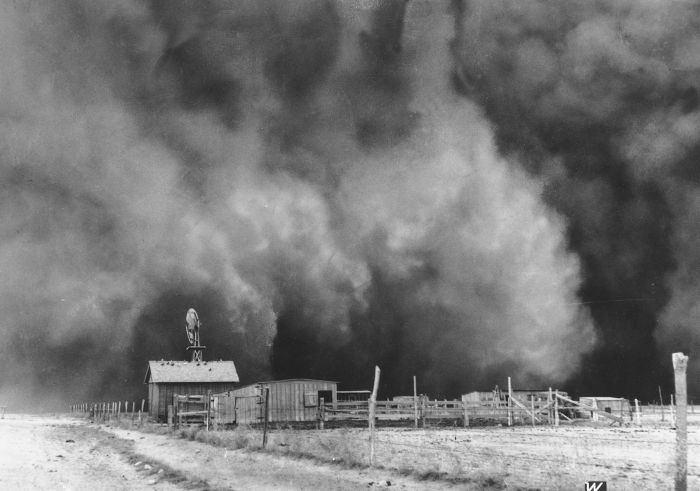|
|
History: Dust Bowl, Dirty Thirties, 1930s, Great Plains, American And Canadian Prairies
|
Recognizing the challenge of cultivating marginal arid land, the United States government expanded on the 160 acres offered under the Homestead Act—granting 640 acres to homesteaders in western Nebraska under the Kinkaid Act (1904) and 320 elsewhere in the Great Plains under the Enlarged Homestead Act (1909). Waves of European settlers arrived in the plains at the beginning of the 20th century. A return of unusually wet weather seemingly confirmed a previously held opinion that the "formerly" semiarid area could support large-scale agriculture, which was readily enabled by technological improvements such as mechanized plowing and mechanized harvesting.
The combined impact of the Russian Revolution and World War I increased agricultural prices, which further encouraged farmers to dramatically increase cultivation. For example, in the Llano Estacado of eastern New Mexico and northwestern Texas, the area of farmland doubled between 1900 and 1920, then tripled again between 1925 and 1930.
The favored agricultural methods of farmers during this period created the conditions for large scale erosion under certain environmental conditions. The widespread conversion of the land by deep plowing and other soil preparation methods to enable agriculture virtually eliminated the native grasses which held the soil in place and helped retain moisture during dry periods. Furthermore, cotton farmers left fields bare over winter months, when winds in the High Plains are highest, and burned the stubble as a means to control weeds prior to planting, thus depriving the soil of organic nutrients and surface vegetation.
When severe drought struck the Great Plains region in the 1930s, it exposed the increased risk for erosion that was created by the farming practices in use at the time. The drought dried the topsoil and over time it became friable, reduced to a powdery consistency in some places. Without the indigenous grasses in place, the high winds that commonly occur on the plains were able to create the massive dust storms that marked the Dust Bowl period.
|
|









